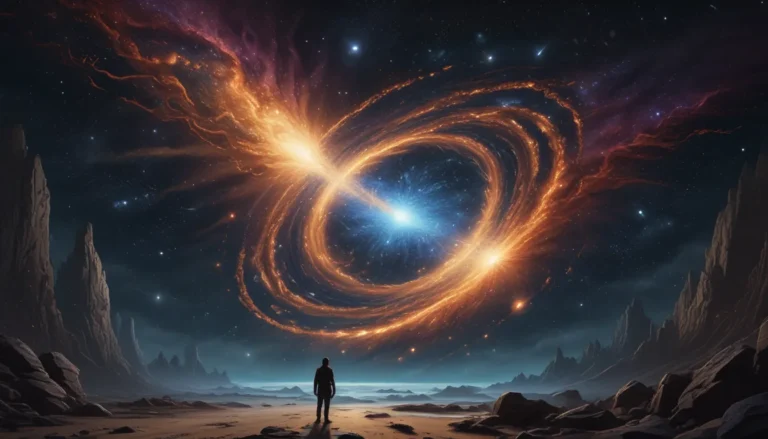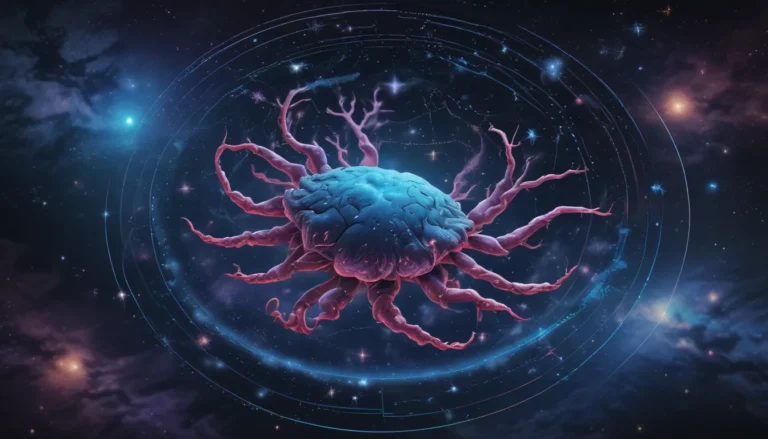The pictures we use in our articles might not show exactly what the words say. We choose these pictures to make you interested in reading more. The pictures work together with the words but don’t take their place. The words still tell you the important facts.
Embark on a cosmic journey through the realms of galactic astronomy and unravel the mysteries of galaxies, stars, and celestial wonders that lie beyond our Earthly confines. In this exploration, we will delve into 17 unbelievable facts that showcase the astounding phenomena and revelations that exist in the vast expanse of the universe.
The Vast Cosmos of Galaxies
Galactic astronomy opens the door to a world of galaxies, each with its own unique characteristics and enigmatic allure. The Milky Way, our home galaxy, is just one of billions spread across the Universe, with each galaxy housing billions of stars and endless mysteries waiting to be unveiled.
Diversity in Galactic Structures
From the elegant spirals of spiral galaxies to the rounded forms of elliptical galaxies, the diversity in galactic structures is truly awe-inspiring. Irregular galaxies, with their undefined shapes, add a touch of mystery to the cosmic tapestry, beckoning astronomers to unravel their secrets.
The Enigma of Supermassive Black Holes
Supermassive black holes lurk at the centers of galaxies, including our very own Milky Way, exerting an immense gravitational pull that shapes the galactic environment. These cosmic behemoths, with masses millions to billions of times that of the sun, stand as monumental landmarks in the celestial landscape.
Cosmic Collisions and Mergers
Galaxies engage in a mesmerizing celestial dance as they collide and merge with one another, creating new galactic entities with unique characteristics. This process of galactic interactions, known as galactic cannibalism, contributes to the growth of massive galaxies over cosmic timescales.
Stars: The Celestial Inhabitants of Galaxies
Within galaxies, a diverse population of stars exists, ranging from massive blue giants to faint red dwarfs. The life cycles of these stars play a pivotal role in the ecosystem of galaxies, influencing the birth of new stars and planetary systems and shaping the dynamics of the galactic environment.
Galaxies as Cosmic Architects
Galactic filaments, like threads in a cosmic web, connect galaxies in vast networks that stretch across the Universe. These filaments, composed of dark matter and gas, serve as pathways for the assembly of galaxies and galaxy clusters, shaping the cosmic landscape in which galaxies reside.
The Lifelong Journey of Stars in Galaxies
Galaxies serve as cosmic nurseries where stars are born from dense gas clouds, evolving over time to exhaust their fuel and undergo spectacular deaths. Events such as supernovae and the formation of neutron stars and black holes mark the final chapters in the life cycle of stars within galaxies.
Unraveling the Mystery of Dark Matter
Dark matter, an elusive substance that interacts only through gravity, comprises a significant portion of the mass within galaxies. Despite its enigmatic nature, dark matter influences the dynamics and evolution of galaxies, adding a layer of complexity to the cosmic narrative.
Galactic Collisions: Catalysts for Stellar Evolution
Galactic collisions and interactions trigger intense star formation as gravitational forces compress gas and dust within galaxies. These interactions create vivid celestial scenes and shape the future evolution of merged galaxies, showcasing the dynamic nature of galactic environments.
The Symphony of Galactic Life: Periods of Activity and Quiescence
Galaxies undergo phases of quiescence and activity, akin to the ebb and flow of life itself. Active galactic nuclei, regions at the centers of galaxies powered by accretion onto supermassive black holes, emit intense energy and illuminate the mysteries of galactic dynamics.
Galactic Archaeology: Unveiling the Past of Galaxies
By studying the stellar populations within galaxies, astronomers can trace the evolutionary timeline of galactic structures and unravel their past interactions. Galactic archaeology provides valuable insights into the formation and evolution of galaxies, offering a glimpse into their historical narrative.
Cosmic Chemistry: The Enrichment of Galaxies
Galaxies play a pivotal role in the synthesis and dispersal of elements heavier than hydrogen and helium, shaping the chemical composition of future stars and planetary systems. The process of cosmic chemical enrichment reveals the interconnectedness of galaxies and their influence on stellar evolution.
The Cosmic Collision Course: Andromeda and the Milky Way
In a cosmic dance spanning billions of years, the Andromeda Galaxy and the Milky Way are on a collision course that will reshape both galaxies into a new galactic entity. This celestial event highlights the dynamic nature of galaxies and the ever-evolving landscape of the cosmos.
Magnetic Mysteries: Exploring Galactic Magnetic Fields
Giant magnetic fields permeate galaxies, influencing their structure, dynamics, and the propagation of cosmic rays. The study of galactic magnetic fields represents a complex and ongoing research endeavor that sheds light on the hidden forces shaping the cosmic environment.
Gravitational Lenses: A Cosmic Window to the Universe
Galaxies serve as "cosmic lenses," bending and magnifying light from distant objects behind them through gravitational lensing. This phenomenon provides astronomers with a unique perspective to study inaccessible regions of the Universe, offering insights into the distant reaches of cosmic space.
Galactic Astronomy: Illuminating the Universe’s Evolution
Through the study of galaxies, astronomers gain valuable insights into the origin, expansion, and fate of the Universe itself. Galactic astronomy serves as a beacon of knowledge, guiding our understanding of the broader cosmic scheme and unraveling the cosmic narrative that binds galaxies together.
A Cosmic Conclusion
The field of galactic astronomy unveils a tapestry of wonders that captivate the imagination and broaden our understanding of the universe. From the intricacies of galactic interactions to the cosmic ballet of colliding galaxies, each discovery illuminates the sheer complexity and beauty of the cosmos.
FAQs: Answering Your Galactic Questions
- What is Galactic Astronomy?: Galactic astronomy focuses on the study of galaxies, their formation, structure, dynamics, and evolution.
- How Many Galaxies Exist in the Universe?: Billions of galaxies populate the observable universe, each hosting billions of stars.
- What Are Black Holes?: Black holes are regions in space with a gravitational pull so strong that nothing, not even light, can escape.
- Are All Galaxies the Same?: No, galaxies exhibit various shapes and sizes, including spiral, elliptical, and irregular galaxies.
- How Do Galaxies Form?: Galaxies form through gravitational collapse, where gas and dust coalesce to create stars and galaxies.
- Can Galaxies Collide?: Yes, galaxies can collide and merge, leading to the creation of new galactic formations.
Discover the Wonders of Galactic Astronomy
As we journey through the cosmic tapestry of galaxies and stars, the mysteries of the universe unfold before us, inviting us to delve deeper into the realms of galactic astronomy. Each fact and revelation serves as a beacon of knowledge, guiding us through the infinite expanse of space and offering glimpses into the cosmic wonders that await discovery.
In our quest to understand the universe and our place within it, galactic astronomy stands as a testament to the boundless curiosity and insatiable thirst for knowledge that drives humanity's exploration of the cosmos. Embrace the marvels of galactic astronomy, and let the wonders of the universe inspire and captivate your imagination as we continue to unravel the secrets of the cosmos.






